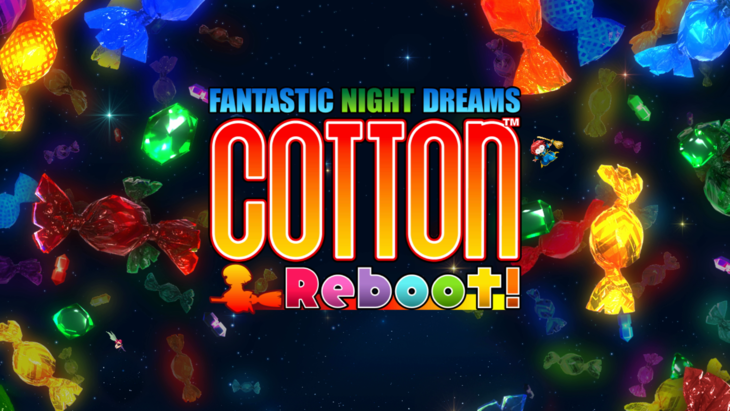
The year is 1991 and Sega is huge in arcades in Japan. Early development started with the working title, Kurumi-zaka Diary: Katsugeki-Hen. Later, it changed to Cotton: Fantastic Night Dreams. First released in arcades, Cotton was ported later to the TurboGrafx-16 in 1993 for home consoles. The improved version however was on the Sharp X68000 home computer, trumping the arcade version.
After many ports, sequels, and follow-ups, Cotton Reboot! was created by Success once again, this time with an HD reboot. Everything from the characters, animations, and music, all updated and revived. All of the game has been revised and cleaned, giving this old IP some new polish.
This game delights and surprises at every turn, even when it’s difficulty can be a little tricky. The genre of “cute ’em ups” was barren until Cotton hit the scene, sparking influence for games to come like Twinkle Star Sprites, TwinBee, and Fantasy Zone. Ultimately, this game is not only a complete package, but it’s a shining example of how reboots of older IPs should be done.
Cotton Reboot!
Developer: Success
Publisher: Beep
Platforms: Nintendo Switch (Reviewed), PlayStation 4
Release Date: July 20th, 2021
Players: 1
Price: $39.99 USD
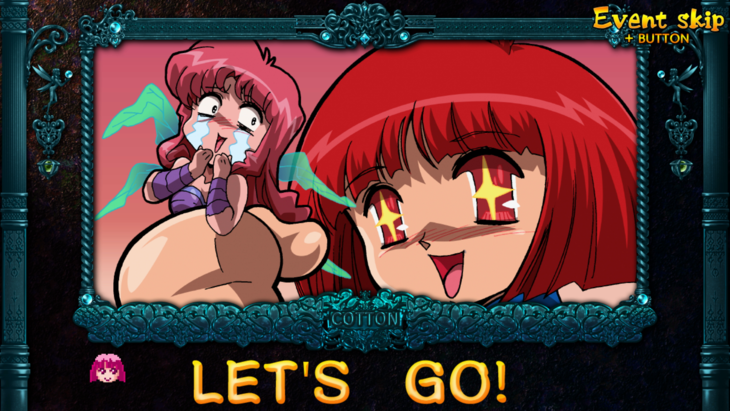
In a fantasy dream world, darkness has stolen light prisms, setting the world in eternal darkness. Nata de Cotton, a witch with great power, is coerced to help Silk the fairy to gather Willow candy and defeat the demons of darkness. Once seven Willow candies are obtained, a giant Willow candy will be rewarded.
Cutscenes play out before and after each stage showing interaction between the new partners in their adventure. While short, the story of Cotton is similar to watching an OVA of an anime series.
Lasting around 30 minutes, after you complete the game you can unlock sequel character Appli. She’s another witch like Cotton that has a fascination with Willow as well, but has no story elements of her own in the game, probably due to the exclusion of her during the original.

Gameplay is easy to learn, somewhat difficult to master. Crystals sometimes appear from defeated enemies; when shot, it diffuses magic. When diffusing magic, it increases damage against the enemy, similar to a multiplier. Using this method makes your score much higher, enabling you to get more lives.
Alternatively, gathering the crystals increases the magic level for special attacks; of which there are 6 different elements. Taking damage or losing a life however will make the level decrease, forcing the player to restart.
Acquiring bombs and fairy servants give more firepower and angles to attack foes. Saving fairies from a specific enemy will add them to your arsenal, stacking up to 6 total. They don’t incur damage, and can be positioned based on your movements.
Bombs have levels that can increase from drops by enemies every so often. Bombs are used naturally along with your magic, dropped by your fairies to take out grounded enemies, like zombies. Utilizing every method at your disposal makes this fun and addictive with the urge to go back and do better, and feel more powerful each playthrough.
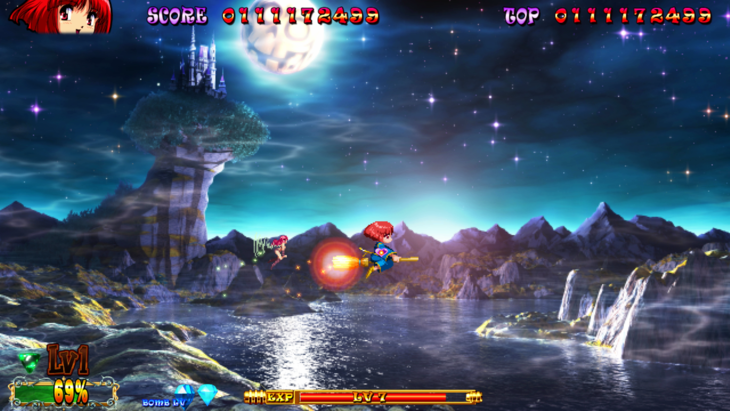
Visually, the art style resembles the late 80’s to early 90’s aesthetic; new high definition drawings revitalize the look and appeal of characters. One could argue that it removes “soul” from the original. Simply put, the HD reboot improves the art ten fold.
Backgrounds have been updated to still give a pixel look to environments, characters, and bosses. Interestingly enough, there are no frame drops, missing textures, or anything that could be labeled as a downgrade; everything is upgraded and is a bit closer to the Sega Saturn sequel.
During gameplay, sprite work including animations and HUD are stylized, resembling something seen in Dave & Buster’s locations. Things can get hectic on screen from the massive amount of enemies, projectiles, and numbers appearing.
Portions of stages contain parallax backgrounds, and a few disorienting segments of rocks falling or pillars. This can sometimes obscure view or trick players into movement undesired.
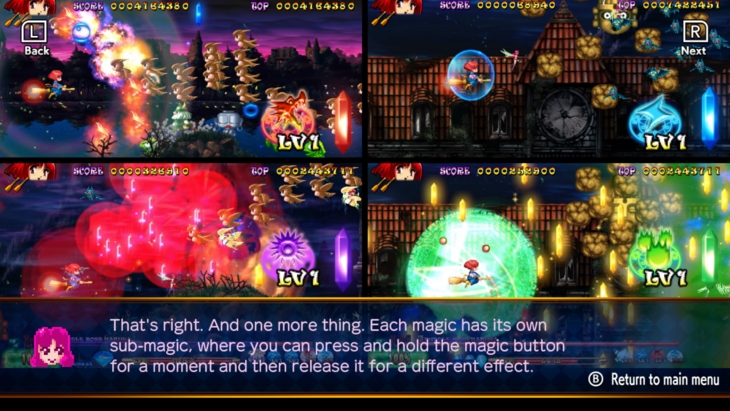
Each stage and it’s boss, has a different arrangement made by different composers. If you’re familiar with Japanese games, works by Shinji Hosoe can be heard in works like DJMAX Respect, Tekken (1995), and Street Fighter EX3. He’s only one of many composers working on the music. All composers in the list make take the stage in producing varying pieces, and never fail to make this reboot feel a little more home.
With a lot of synths, guitar riffs, and drums, it’s definitely a nostalgia rush. While the music doesn’t necessarily match the environment or world, it matches the intensity of the fighting.
Heart-racing, fist pumping, and headbanging is the best way to describe the magnitude of musical tones filling your ear for the time you’ll be spending flying. Outside of the stage, during cutscenes, the music is funny and cheerful for the comedic portions. Even then, cutesy, upbeat jingle-esque music allows for a break to not overload the senses.
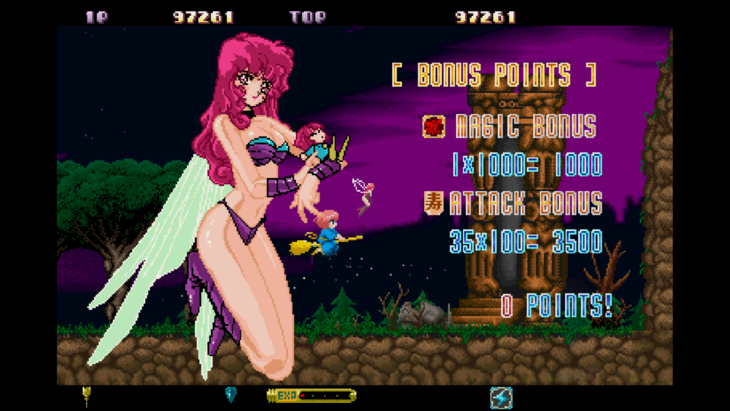
Alongside the HD reboot, Cotton Reboot! also features the original Sharp X68000 home computer port. Keeping the old school spirit intact, the graphics, music, and old animation sprites return.
Compared to the HD reboot, it features less HUD elements, less monsters on screen, and even less bombastic music. Art style is slightly different, due to the era which it released, along with music and enemies because of hardware limitations.
Fundamentally, Cotton Reboot!‘s Arrange Mode (the HD reboot), reminds me of Senran Kagura: Burst Renewal; in the sense that it takes the oldest and the newest elements. Taking the original game’s mechanics, and the latest game’s tried and tested improvements. Cotton does this extremely well, making the game feel modern while retaining the charm of the original.
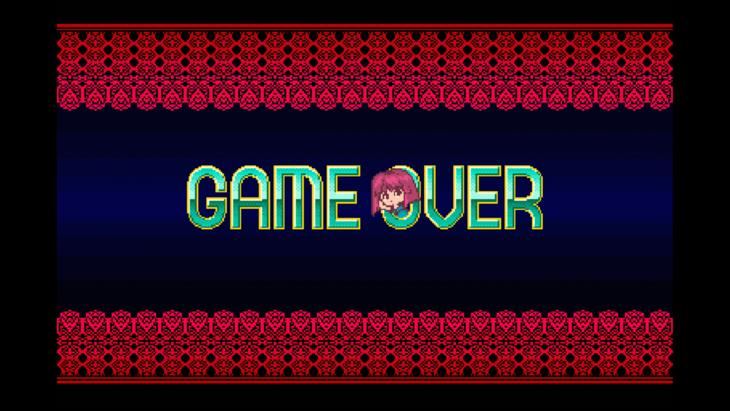
From start to finish, Cotton Reboot! sets out to complete it’s task; to revive a once dormant franchise and present it to a new audience. The overall presentation, quick pick-up and go gameplay, and amazing soundtrack culminate into an amazing package.
The only flaws are the length of the game and price. It’s short, but perfectly short. Cotton Reboot! features 6 stages and one final boss which is the normal length for an arcade game, especially from the early 90’s. I couldn’t put this game down for hours after I started playing.
It’s a throwback to quarter munching arcade games of it’s time. The price tag of $40 USD is high for the amount of content presented, but can be excused because of replayability. Additionally, it’s indirectly supporting the next release Cotton Rock ‘n’ Roll coming in December to Japan. I hope and pray for Cotton II to be rebooted as well.
Cotton Reboot! was reviewed on Nintendo Switch using a review code provided by Beep. You can find additional information about Niche Gamer’s review/ethics policy here.